by James A. Bacon
There are hundreds of ways to slice and dice the recently released Standards of Learning (SOL) data measuring the academic achievement of Virginia’s public school children in the 2021-22 school year. Let’s start with the simplest: which school districts performed the best and which performed the worst?
Here are the 15 top-performing districts as measured by the percentage of students who passed their English SOLs. (Writing, math, science, and history pass rates correlate closely with English, so, to keep the presentation simple, I use the English SOLs as a proxy for academic achievement across the board.)
The list isn’t dominated, as one might suspect, by rich, highly-funded Northern Virginia school districts (Falls Church stands atop the list but it is the only one of the top 15), nor is it dominated by affluent suburban districts. To be sure, York County, Virginia Beach, Roanoke County and Hanover County appear on the list, but they comprise only four of the top 15.
The most striking feature is the number of small town/rural districts from Western and Southwestern Virginia — the City of Lexington, and the counties of Patrick, Botetourt, Wise, Washington, Scott, Highland and Wythe. What does it tell you when poor, under-resourced Appalachian counties out-perform the rest of the state in achieving the goal of ensuring that every student masters the basics?
(My hunch is that Virginia’s Appalachian districts shine less brightly in the percentage of students who pass their SOL tests at an advanced level. But who knows, we might be surprised. I hope to find the time to address that topic in another post.)
Here are the worst performing districts:
The list is overwhelmingly dominated by cities, both large and small, with a handful of poor Southside counties thrown in. In five cities — Richmond and Petersburg being the most notorious — the percentage of students passing the English SOL exams fell below 50%.
This is just a first swipe at the data. It identifies superstar districts, which might be worth emulating, and it identifies problem districts, where the educational system is clearly failing. The COVID pandemic posed a tremendous challenge to every school district, but some have shown more resilience than others. In my next post, I’ll try to identify the districts that have rebounded most quickly from COVID.
Here is a list of all Virginia districts ranked by the percentage pass rate from top to bottom.

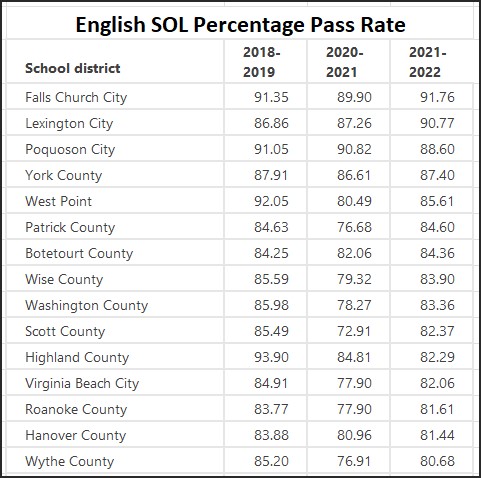
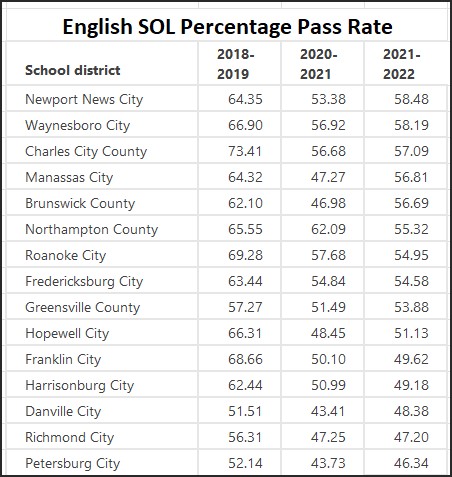

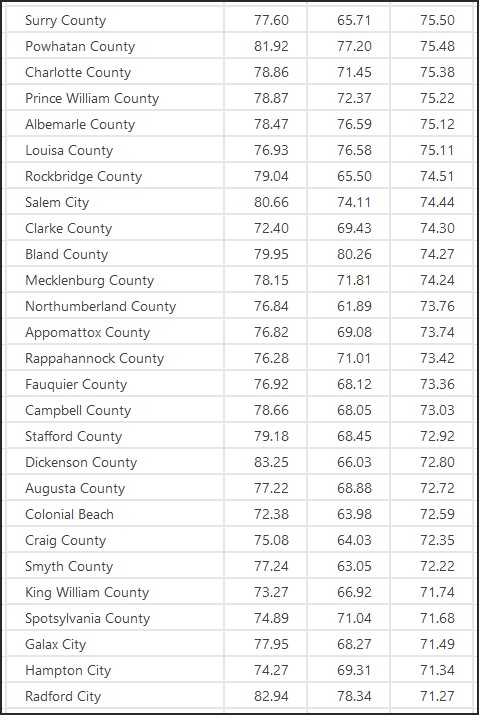
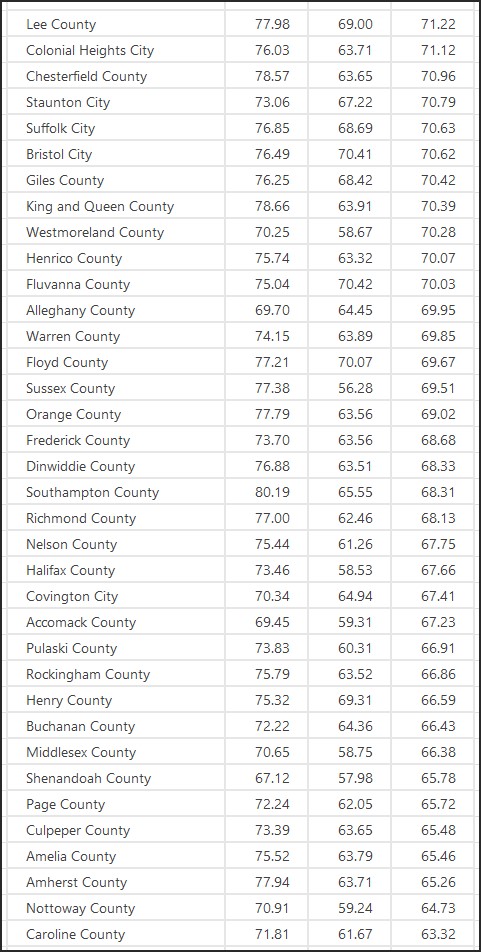
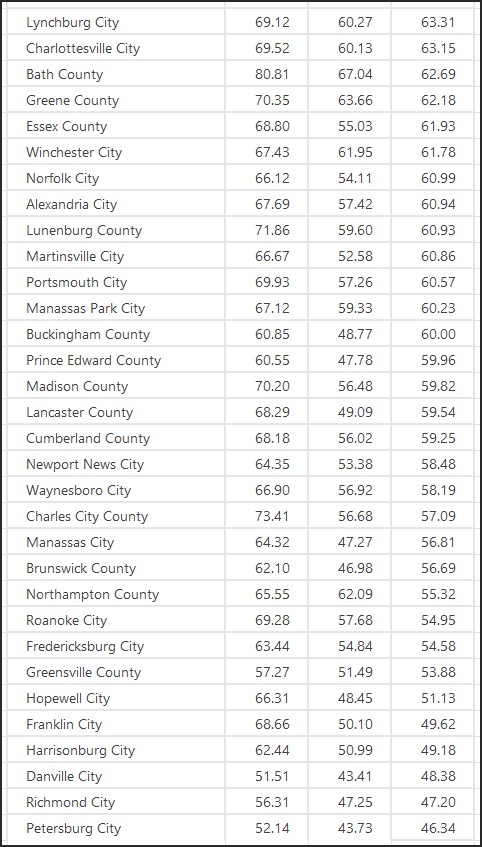
Leave a Reply
You must be logged in to post a comment.